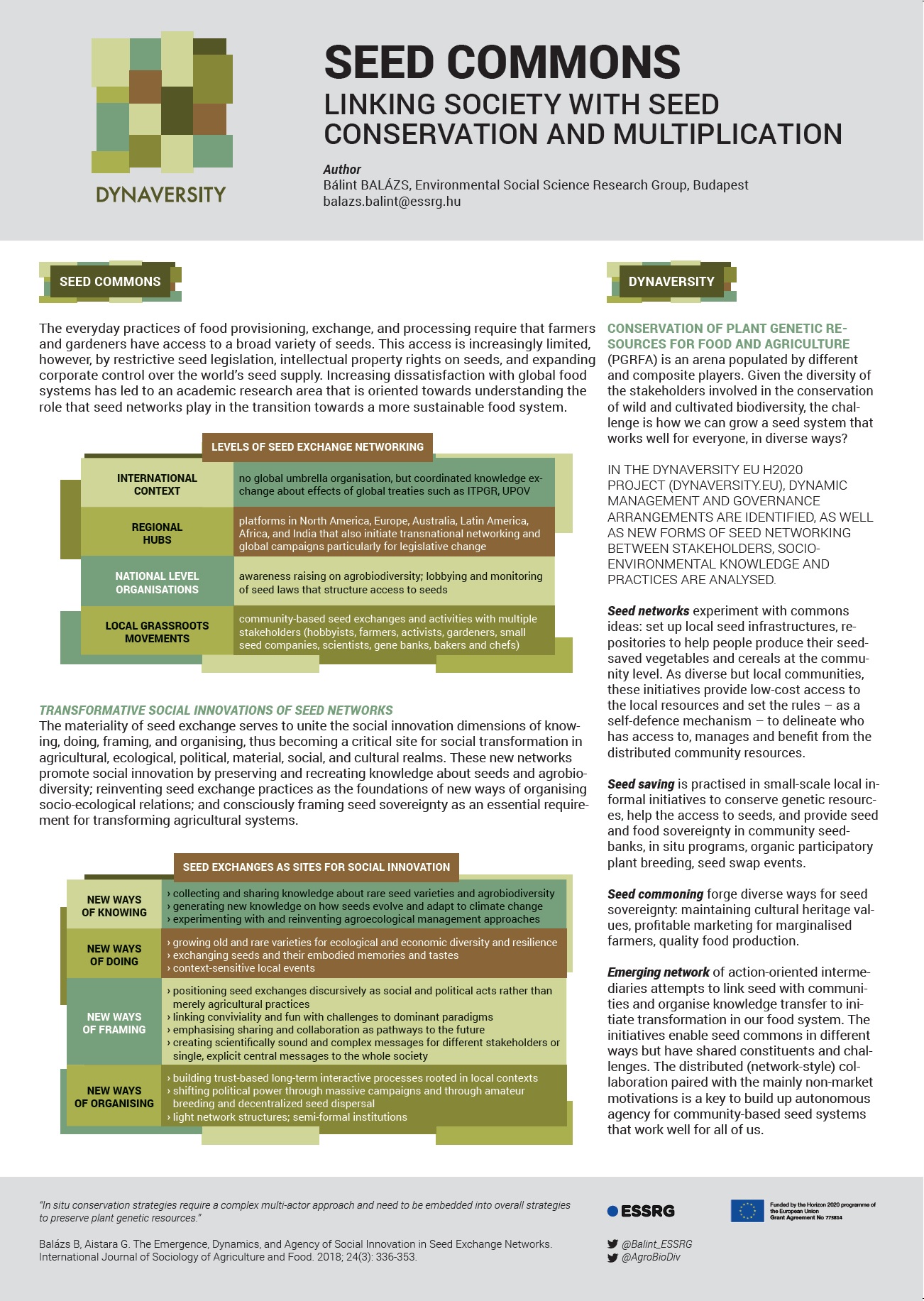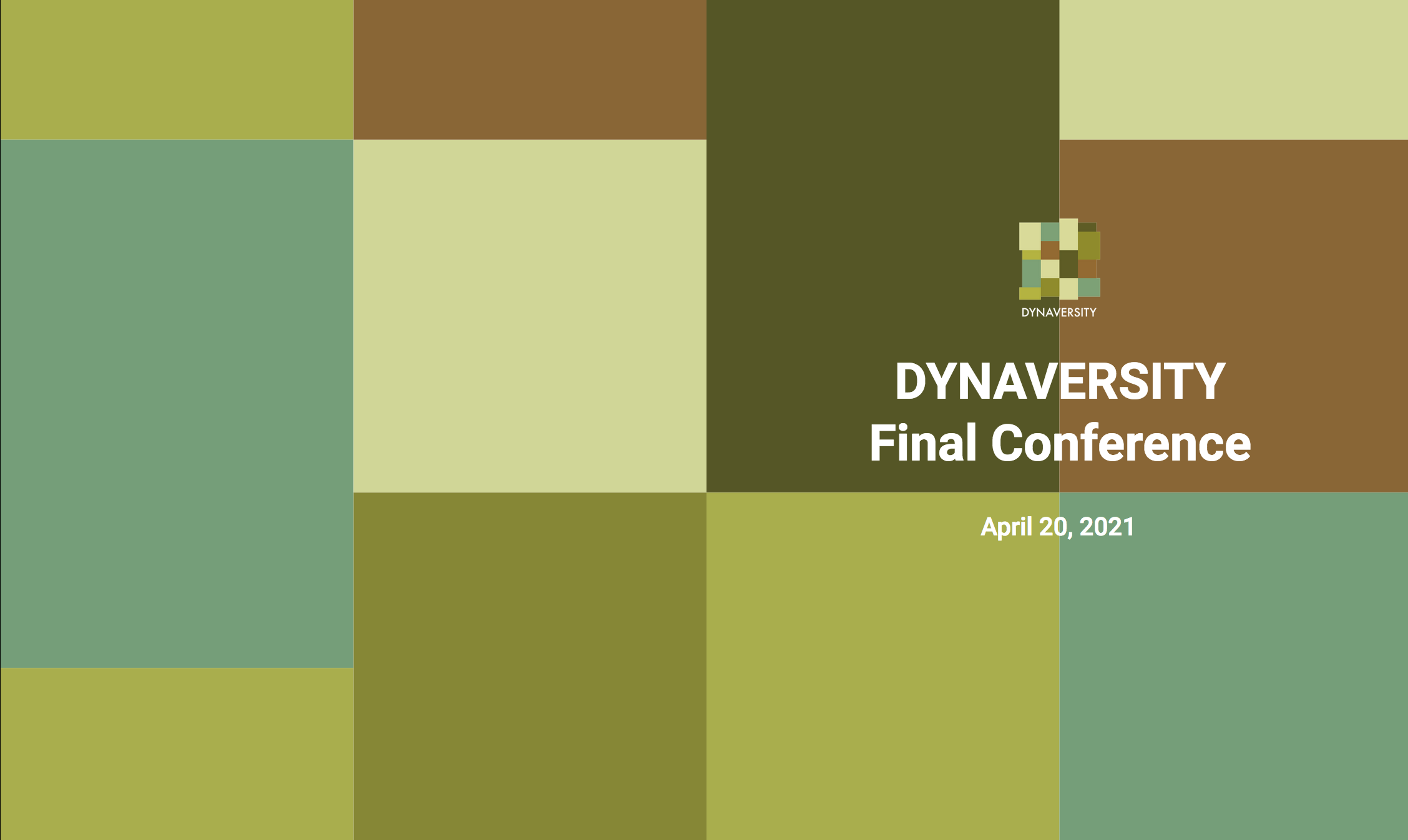The final online conference of the Dynaversity project attracted circa 75 participants interested in discussing dynamic seed networking opportunities, as well as necessary institutional and policy frameworks for crop diversity governance.
The main question we asked ourselves in Dynaversity is how we can grow a seed system that works well for everyone in diverse ways and communities. Practically this is about access to home gardens, the practice of food self-provisioning, membership in community agriculture, participation in seed swap events, supporting a local community seed bank, joining a participatory plant breeding team.
Looking at our agrobiodiversity in the last century, we lost 75% of the genetic diversity of crops. We have about four-hundred-thousand plant species, of which thirty-fifty thousand are edible. In contrast, only 150 crops are cultivated and consumed, and only 3 provide 60% of the calories in the human diet (maise, rice and wheat). This is no surprise when the market allocation of our food and seed is totally concentrated: our modern improved seeds are owned by private corporations whose business model is dependent upon providing few high-yielding varieties for established value chains. According to the publicly available data analysed by Phil Howard, the market share held by the top four firms globally is 40 percent or higher in an increasing number of farming sectors: equipment, seeds, or agrochemicals. Did you notice that the top four agrochemical corporations control half of the global sales of commercial seeds? These are the same “seed-pesticide giants” that profit from pushing seeds engineered to withstand their own pesticides.
In Dynaversity ESSRG led the work on the contextualization of dynamic management and governance arrangements and created a framework to analyse new forms of seed networking between stakeholders. What are seed networks? Seed networks are local and community-based initiatives that seek to set up local infrastructures, repositories (community seedbanks, in situ programs) to help people produce their seed-saved vegetables and cereals at the community level. Seed networks provide low-cost access to the local resources and preserve (material and intangible) cultural heritage via seed swap events, or knowledge exchange platforms. Seed networks also set the rules of network-style, distributed collaboration, and non-market seed provisioning. Seed networks create a self-defence mechanism to delineate who and how has access to, manages and benefit from the distributed community resources (participatory plant breeding). Finally, seed networks enable to recognise of seed as a commons.

The Dynaversity conceptual framework positioned seed systems within five narratives, that shed light on conflicts:
• Seeds and plant varieties (What are differences, and why do they matter?)
• Seed networks (Who manages seeds and genetic resources?)
• Conservation of plant genetic resources (How to preserve for future generations?)
• Agrobiodiversity governance (How do laws affect seeds?)
• Diverse Food and Farming Systems (What is the role of diversity in sustainable agriculture?)
The narratives are followed by a glossary of 90 concepts with definitions, explanations of the root of controversy over the term.
The EU Farm to Fork strategy aims to make the EU food system more resilient to crises like Covid-19 and natural disasters such as floods or droughts. To achieve this, value chains must move towards becoming more biodiverse and remain dynamic. In seed issues, the strategy is clear: it highlights that sustainable food systems need seed security and diversity, farmers’ access to quality seeds for plant varieties adapted to the pressures of climate change, easier market access for traditional and locally adapted varieties. All in all, the Farm to Fork strategy is promoting new seed and food value chains and governance arrangements that enable diverse crop varieties adapted to local food systems.
During the #DYNAVERSITY Final Conference, @Balint_ESSRG talked about the #agrobiodiversity conceptual framework & the #Farm 2Fork Strategy. Want to find out more? Watch this video interview! ??⤵️@essrg @ECLLD @retesemi @Urgenci1 @formicablu
— AgroBioDiv (@AgroBioDiv) April 20, 2021
